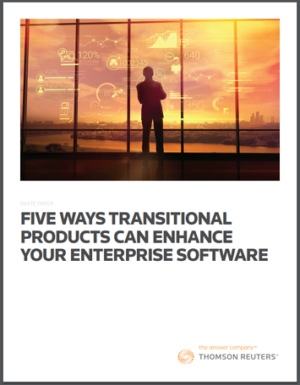The writer with her sister and father in Trafalgar Square, London, in 2006 [Photo courtesy: Danai Nesta Kupemba]
“I died for this country,” is a running joke in my family; something my father says whenever Heroes’ Day rolls around, laughing so hard that tears form in his eyes.
But beneath his broad smile is a gentle reminder to me and my three siblings: that he nearly did.
My dad was 12 years old when, in 1975, he joined Zimbabwe’s War of Independence. Also referred to as the Second Chimurenga, it lasted from 1964 to 1979, and marked the beginning of the end of white minority rule in what was then known as Rhodesia.
It was a fight against Ian Smith’s Rhodesian government (backed by Britain), which sought to protect white settler interests at the expense of the indigenous people of Zimbabwe.
Heroes’ Day commemorates those who fought and died for Zimbabwe’s independence.
With a stomach last filled a few days earlier and his adolescent chest puffed out with pride, my father had signed up to the Zimbabwe African National Liberation Army (ZANLA) alongside men two or three times his age in search of freedom and a regular supply of food.
They had a shared dream: that they would one day have their own little piece of Zimbabwe, right the wrongs of the past and take back what had been stolen from them by white settlers.
After a few days of training, my dad and hundreds of other men and boys trekked through the unforgiving terrain of the Eastern Highlands mountain range, surviving on a diet of the grapefruits that grew there. They were heading towards a training facility in Chimoio, Mozambique, and the promise of hot food. Or so my father thought.
A lieutenant my father had befriended on the trek had other plans for him. He made him his errand boy and when the time came for most of the men to march on to Chimoio, he kept my father with him. They would march further to a camp in Nyanga, he told him.
My father watched wistfully as the other soldiers marched towards the promise of a hot meal and some rest, singing war songs as they disappeared into the gaping mouth of a sloping valley.
Dozens of blisters later, my father and the lieutenant arrived at Nyanga. At the centre of the camp, a large pot sat atop a fire. The portions were generous and my father was grateful to have been taken under the lieutenant’s wing. But when he looked around at weapons so old he imagined they must have been recycled from the First Chimurenga (1896-97), he wondered if he would ever get to do what he had signed up for: fight.
So when word came that they would march to Chimoio, my father did so enthusiastically – less bothered by the trek and the diet of grapefruits than he had been before. But the lieutenant, he noticed, walked stiffly, as though his body were reluctant to carry him there.
My father smelled the death before he saw it. When he saw what had happened to many of the men he had marched with before, he was overwhelmed by sadness and an unshakeable feeling of gratitude that he carries with him to this day.
The writer, left, with her dad and sister on their last trip to Edinburgh, Scotland, in 2009 [Photo courtesy: Danai Nesta Kupemba]
My mother’s battlefield
At around the same time in Bocha, a remote area a couple of kilometres outside what was then Umtali and now Mutare, my mother was 11 years old and being tortured by colonial soldiers – the same people my father was preparing to fight.
The soldiers had accused my mother and her family of harbouring bandits in their home. They ransacked their modest house and the small shop that was their livelihood but found no one. Then they beat my mother and her nine-year-old brother with electrical wires until their skin was raw and their throats hoarse from screaming.
A seed of resentment was planted in her. She knew then that she would do whatever she could to ensure the liberation of her country.
She would later tell me stories, her voice filled with excitement and nostalgia, about how she would sneak out of her house at night, careful not to get caught by her parents, and head to the nearby ZANLA base, where she would sing for the newly-inducted soldiers to boost their morale.
She had nothing to give them but her voice, she said, so she gave them that.
My grandfather caught her many times, but the beatings he administered did not stop her returning to the camp with the hope that her voice, soft and lilting, would make someone’s day.
At this point in the telling of her story, my mother would invariably begin singing Jehovah Mufudzi Wangu (The Lord Is My Shepard in Shona), her brown eyes alight with memories and the hope that I might join in. But Shona felt foreign and heavy on my tongue so I would stay quiet and the flame in my mother’s eyes would recede.
The writer in her Christmas jumper while her sister watches on as her mother forces her to wear a beanie hat because of how cold it is [Photo courtesy: Danai Nesta Kupemba]
The end of one war
After the war ended in December 1979 and independence was finally achieved, schools that had been forced to close reopened.
My mum joined her school choir. My dad, fresh from the army, enrolled in the same school. He says he heard her singing before he saw her, but that as soon as he did, he fell in love.
My mother, so defiant and strong, loved the soldier in my father and the youthful recklessness that mirrored her own. My father, scarred but healing from the horrors he had seen, loved the songbird in her.
Together, they carved out a small piece of Zimbabwe for themselves. It was not much; a small house that they shared with another family. My father got a job in the foreign office and my mother in town planning. At home, they would make sausages and buns that they would sell in their workplaces. They scraped and saved.
My father rose through the ranks and, in 1994, was posted to Germany as a diplomat. His family – my mother and my older brother and sister – went with him and enjoyed life in Bonn. They returned to Zimbabwe in 1999, a couple of months after I was born, satisfied and happy.
Posted to England
But sometimes life has a strange sense of humour.
As it did in 2003, when my parents, so deeply in love with their nation, were posted to the place they had fought – and sung – against: England.
I was four years old when we arrived and remember wondering where the sun had gone.
But then it snowed and, convinced that I was living in my very own Christmas card, my infant self was won over. Any early memories I had of Zimbabwe quickly disappeared.
It did not take long until I was completely immersed in British culture. I cried when we wore poppies and remembered our lost soldiers. I sang the national anthem word for word, proud to use the voice I had inherited from my mother to show my allegiance to my new home. I sang Auld Lang Syne, willing her to join in, but she would just shake her head and sigh.
Relatives, who often passed through our home when visiting London taunted and teased me, calling me “kasalad”, a term often used to describe “vanhu varasa tsika”, which means people who have lost their traditional ways.
They pretended to help me by telling me words in Shona, but behind their “help” they held back giggles. My mother tried to defend me but I saw the sadness in her eyes. I was not in touch with my culture, and I did not care. As far as I was concerned, I was British.
To my parents it felt as though I was denouncing my heritage; a heritage they had fought for; a heritage they had seen friends die for. They had struggled for an identity I did not want.
The writer with her sister and their paternal grandparents during one of their visits to London in 2008 [Photo courtesy: Danai Nesta Kupemba]
Smiles, snarls and sadza nenyama
Each year when International Week rolled around at my primary school, my mother would pack sadza nenyama, a Zimbabwean delicacy, for me to take in. I would have to show the other pupils how you rolled it in your hand and patted it down in the gravy before putting it in your mouth.
They would compliment me on how delicious it was. But I did not want their compliments. I wanted bangers and mash or shepherd’s pie.
I stopped participating in the food portion of International Week, wondering how I was supposed to feel a connection to this country that felt so removed from who I was and how I lived.
When 2008 came and inflation hit, common people in Zimbabwe became trillionaires who could not buy bread. For months, Zimbabwean diplomats were not paid. But my parents’ loyalty never wavered. They worried about relatives back in Zimbabwe. But they never contemplated defecting as some other diplomats did.
While other people we knew concocted plans to stay in England after their assignments had finished, my parents were busy building their dream home on the outskirts of Harare. My mother, who had drawn the plans herself, would return there for long stretches of time, meeting architects and builders. She always returned happier than when she had left, her mind imagining an expanse of trees as far as the eye could see. Their roots were rural and they dreamed of returning to that.
My father simply wanted something that was his again and to leave behind the graceless pretence of England. He had grown tired of the smiles in which he saw veiled snarls, the words with their double meanings, how polite everyone was and was not.
During our final year in England, my mother seemed to glow, she stopped going to work and focused all her energy on returning. We spent more time together. She took me ice skating, watching from the side of the rink. Everything seemed perfect.
And then I realised that she was preparing me for the loss that was to come; the loss of the only home I had known.
A family holiday in Wales in 2006 [Photo courtesy: Danai Nesta Kupemba]
Returning to Zimbabwe
When the time finally came for us to return to Zimbabwe at the end of 2010, I felt numb. I stared at my green passport in the airport departures lounge, willing it to turn maroon, to offer me the physical validation of what I felt inside: that I was British.
I cried on the plane, and asked my dad if we would ever return. He said yes, but he did not look at me as he said it.
When the plane landed, the first thing I noticed was the heat. While my parents removed their jumpers to let the sun dance on their skin, I instantly despised it.
My parents enrolled me in an elite boarding school where the other pupils were fascinated by my accent. They liked listening to me talk and I liked being listened to. I told them about the time my aunt had pushed me into a fountain in Trafalgar Square, about the holidays we would take to Wales, Scotland and Ireland, about snowball fights and how cold it would be in winter. They asked me if I had ever met the queen and I told them about how I almost had one time when my parents had attended an African diplomats’ ball.
They hung on to my stories the way I hung on to those memories.
My stories validated that I had been there, that I belonged there, because I felt certain I did not belong in Zimbabwe.
When they spoke Shona, my mind struggled to keep up, so I would just laugh without knowing what I was laughing at.
When the teachers called me London because they could not remember my name, I would feel a frisson of pleasure run through me. I felt seen for who I knew I was.
But then, a few months after returning to Zimbabwe, my accent threatened to leave me; my friends told me it was fading, that I did not sound the same. I heard it too; my t’s were now hard when I said water. I tried to entice it to stay by using more slang than usual; sprinkling my sentences with words I had hardly ever used in England. I became a caricature.
My accent no longer drew people in and my stories grew old and repetitive too.
It rained the day my mother casually told me that I was losing my accent. It felt like a final goodbye from England, a farewell to her unwanted child.
That was the day things changed.
I started listening to my parents’ stories more, like the one about how my father had eaten tinned food that had been poisoned by Rhodesian soldiers, or about the racism my mother had endured as she worked odd jobs in England to save enough money to buy us Christmas presents.
I understood then that their experience of England and mine had been completely different. The country I saw as home, they saw as an oppressor.
I realised then that who I was was not rooted in where I had grown up but in the people who loved me. I may never love Zimbabwe as fiercely as they do, but I know now that I love them more than I could ever love England.






 Jill Switzer has been an active member of the State Bar of California for over 40 years. She remembers practicing law in a kinder, gentler time. She’s had a diverse legal career, including stints as a deputy district attorney, a solo practice, and several senior in-house gigs. She now mediates full-time, which gives her the opportunity to see dinosaurs, millennials, and those in-between interact — it’s not always civil. You can reach her by email at
Jill Switzer has been an active member of the State Bar of California for over 40 years. She remembers practicing law in a kinder, gentler time. She’s had a diverse legal career, including stints as a deputy district attorney, a solo practice, and several senior in-house gigs. She now mediates full-time, which gives her the opportunity to see dinosaurs, millennials, and those in-between interact — it’s not always civil. You can reach her by email at 
 Jordan Rothman is a partner of
Jordan Rothman is a partner of 













